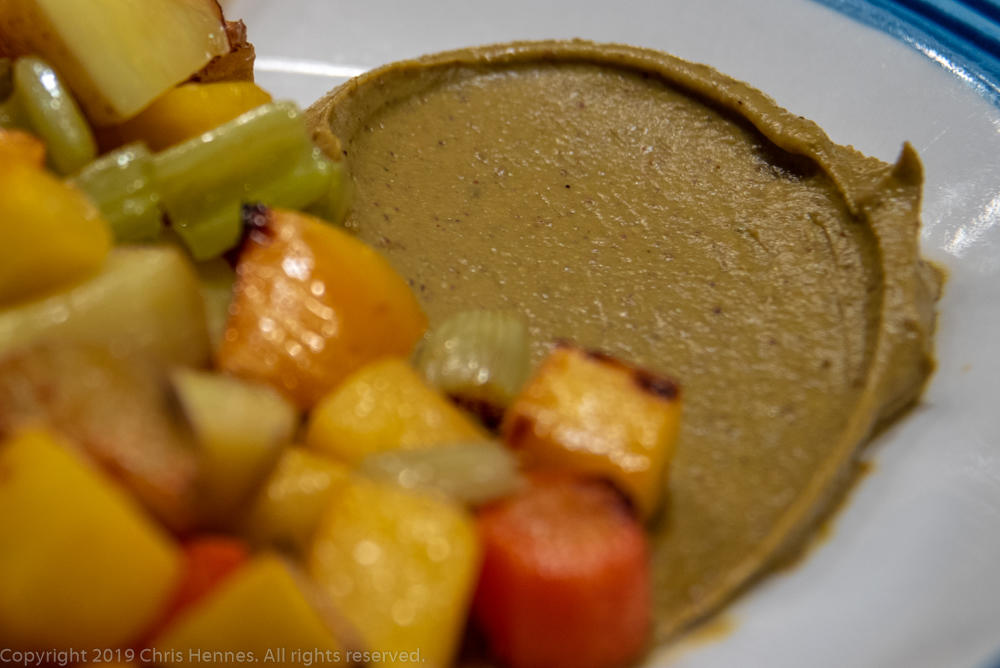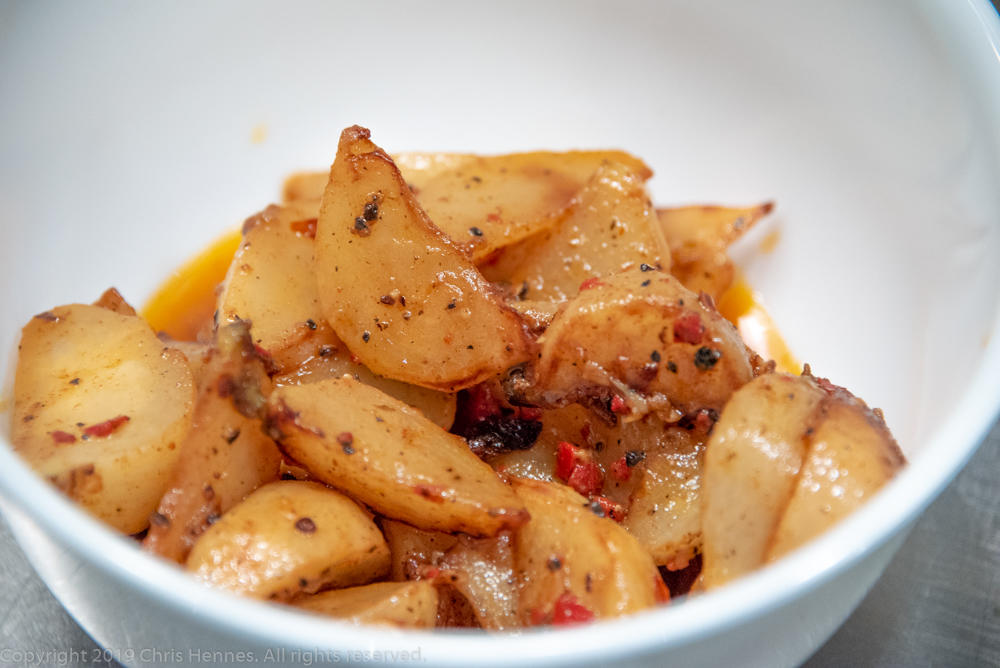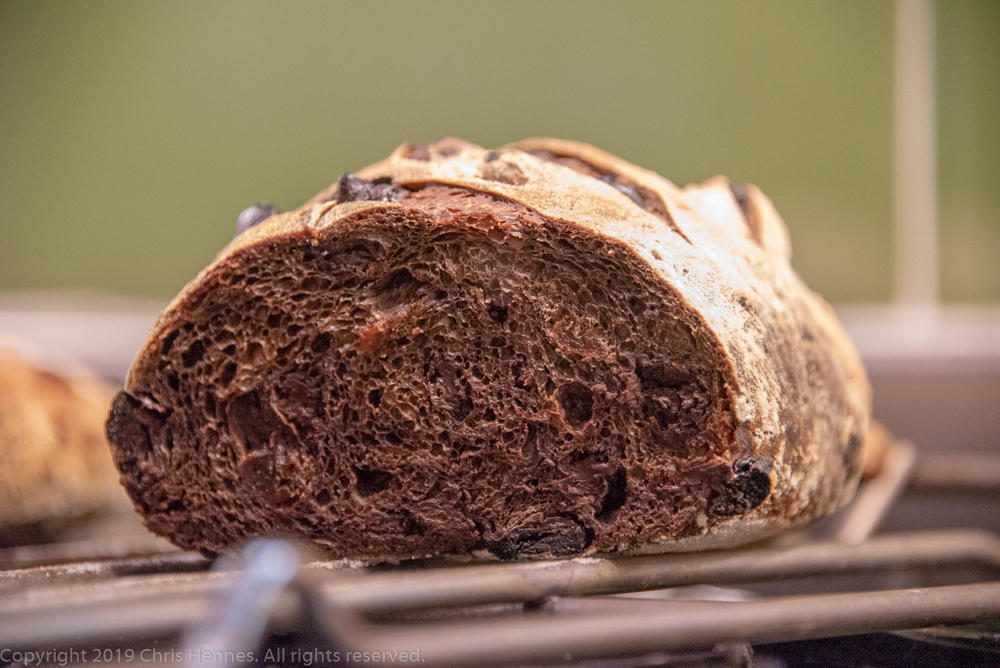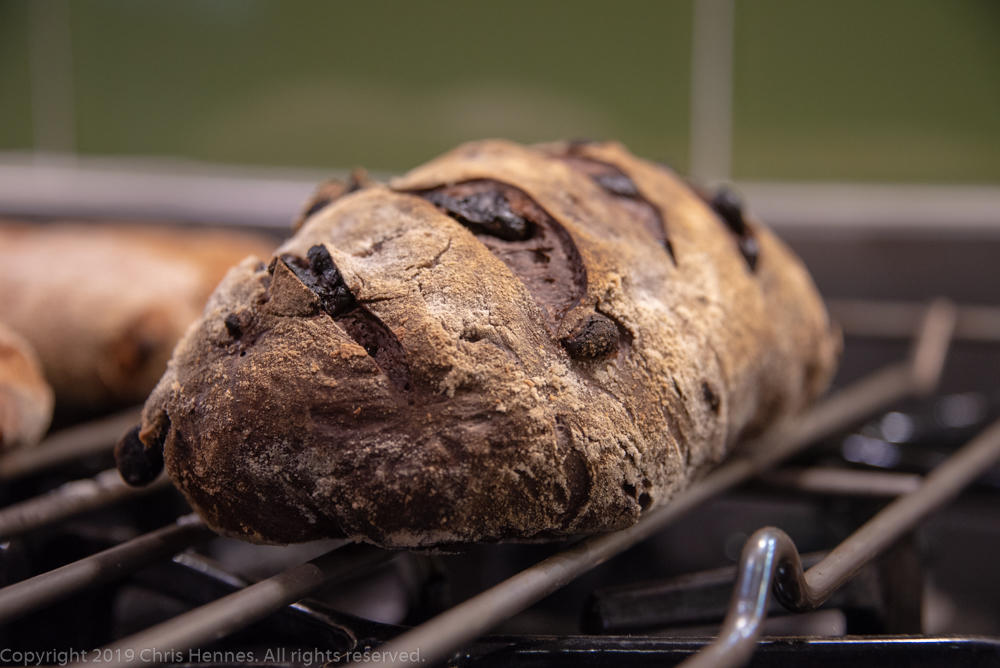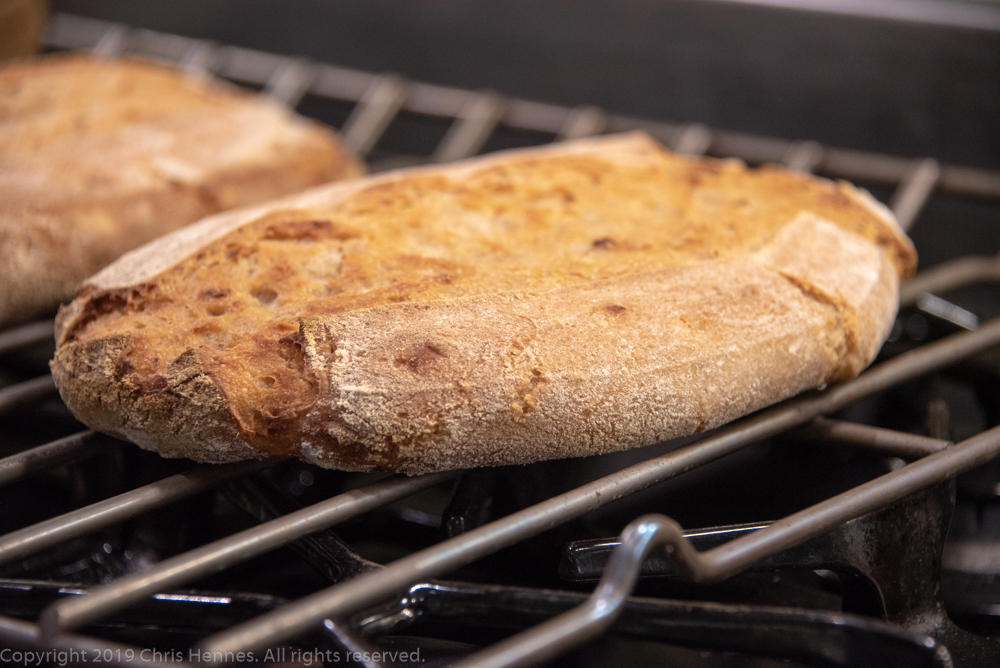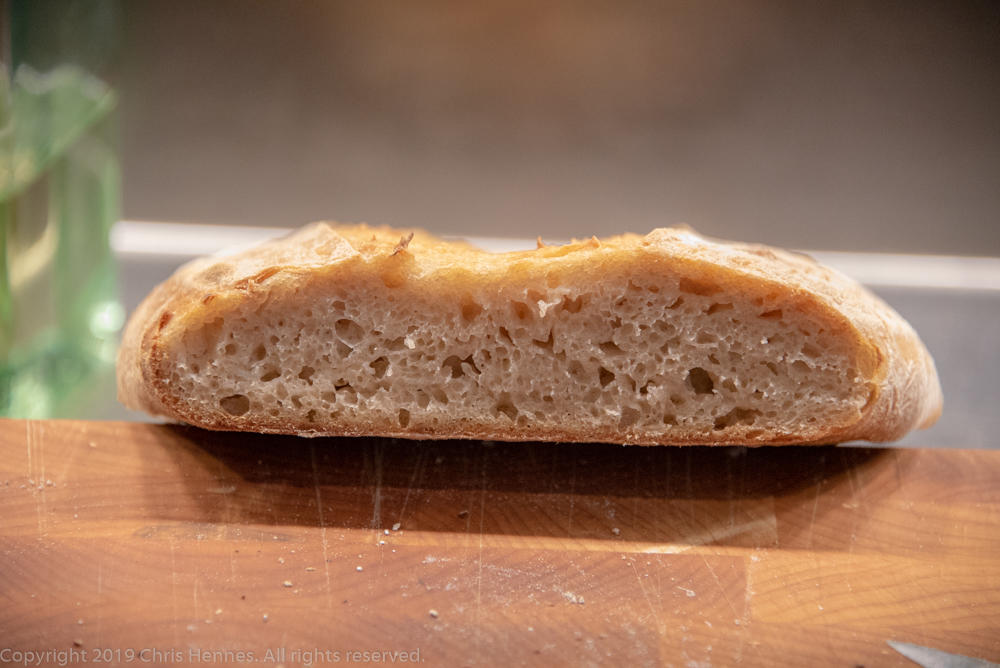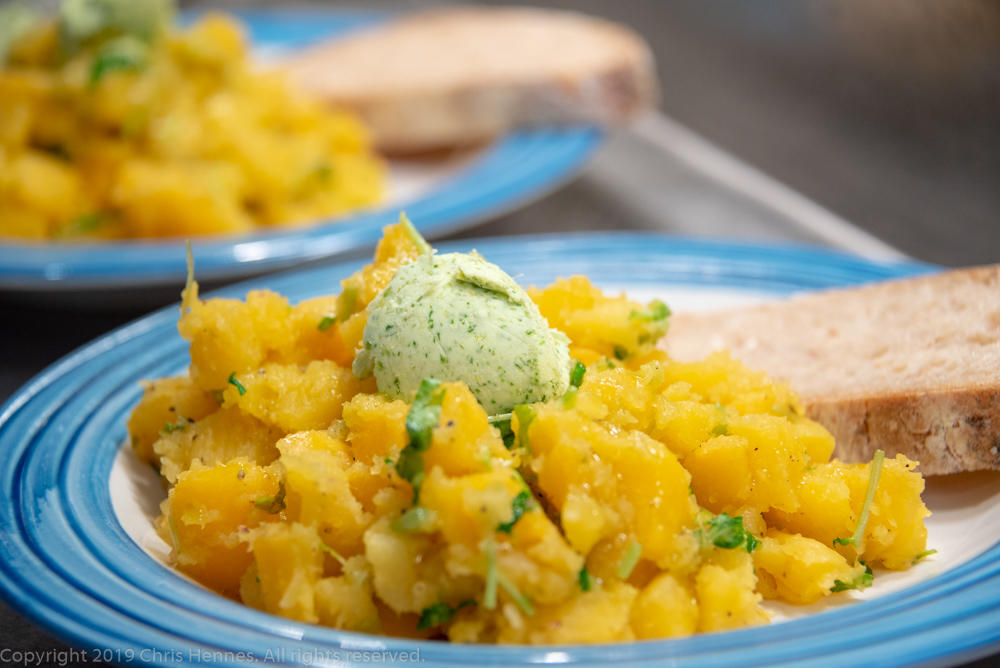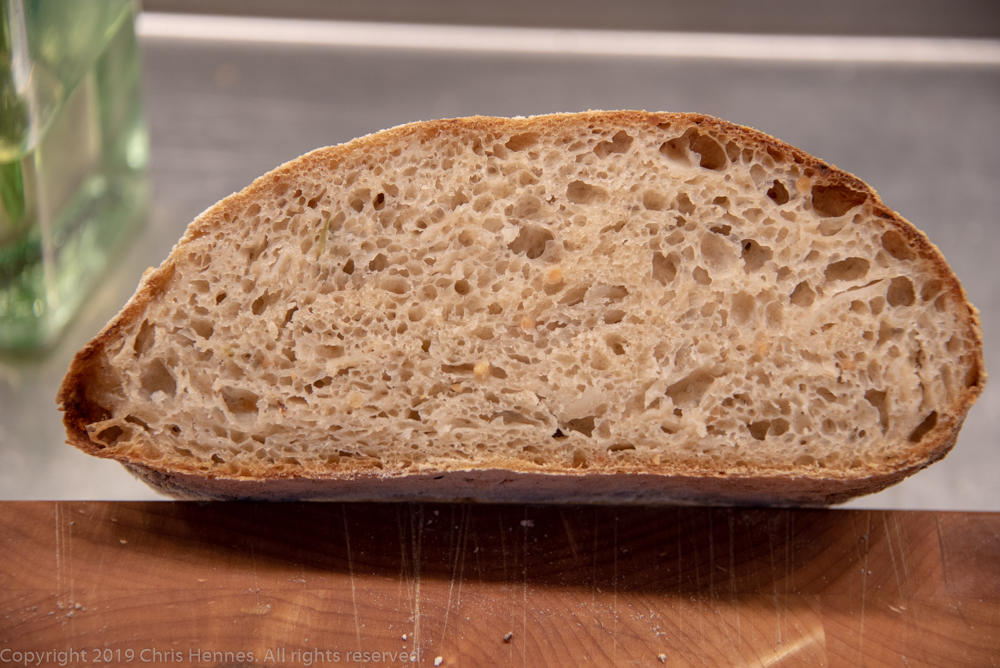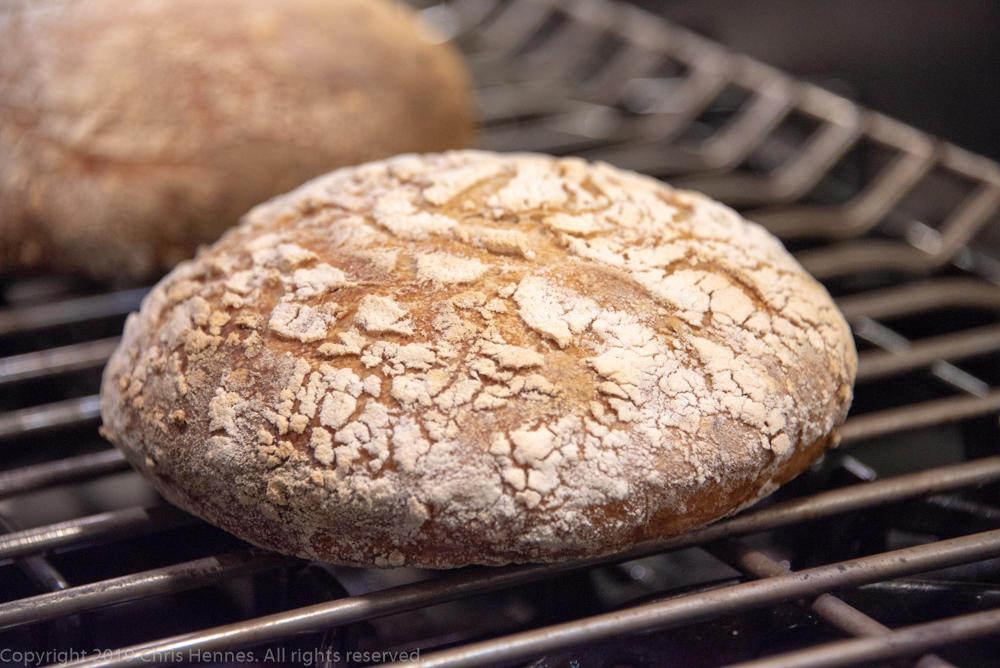-
Posts
10,190 -
Joined
-
Last visited
Content Type
Profiles
Forums
Store
Help Articles
Everything posted by Chris Hennes
-

Baking with Myhrvold's "Modernist Bread: The Art and Science"
Chris Hennes replied to a topic in Pastry & Baking
Yes, though I think my favorite is probably at two days. I haven't really experimented with increments less than a day, though, so it's a pretty coarse sample. And obviously how sour you like your bread is a personal preference. -

Baking with Myhrvold's "Modernist Bread: The Art and Science"
Chris Hennes replied to a topic in Pastry & Baking
In my experience it's about four days (though there are a lot of factors at play). -

Baking with Myhrvold's "Modernist Bread: The Art and Science"
Chris Hennes replied to a topic in Pastry & Baking
I have the same experience -- at 39°F I've found that at least 24h is needed. If I need it faster I take it out of the refrigerator a few hours early and let it proof at room temperature until it's ready. There's too much variability to really pin down an exact number, I think there's no substitute for checking for proof. Also remember that what properly proofed feels like will change depending on the dough's temperature. It's going to be firmer in the refrigerator, so spring back quite a bit more slowly. -
My local coffee shop added oat milk to their menu a couple of months ago, which is the first I'd heard of it: clearly, I am behind on my food trend awareness. This morning's Washington Post has an article about making your own but obviously I'm going to trust advice from eG more than the Post (sorry, Post!). Does anyone make their own at home? Tips/tricks I should know about before trying it?
-

Baking with Myhrvold's "Modernist Bread: The Art and Science"
Chris Hennes replied to a topic in Pastry & Baking
Nice report, @underproofed. I still can't shape a baguette worth crap, I've switched to proofing in bannetons and only making boules and batards. I'm looking forward to seeing your continued progress -- you could make a neat time-series graphic with photos of your progression! -

Cooking with "Six Seasons: A New Way with Vegetables," by Joshua McFadden
Chris Hennes replied to a topic in Cooking
Pistachio butter (page 37) At first glance this looks like a normal pistachio butter recipe, but delving deeper reveals a much more interesting beast. In addition to pistachios and salt, the recipe calls for a small amount of vinegar and olive oil. I wouldn't put it on a sandwich, but as a topping for roasted vegetables the vinegar in particular adds a terrific, if subtle, acidity. I was surprised when looking the recipe up on Eat Your Books a moment ago to note that this does not seem to be the consensus opinion... a couple people commented that they didn't like the vinegar addition, or that it required agrodolce. I couldn't disagree more. -

Cooking with "Six Seasons: A New Way with Vegetables," by Joshua McFadden
Chris Hennes replied to a topic in Cooking
Man, that stuff would be good with just about anything. -

Cooking with "Six Seasons: A New Way with Vegetables," by Joshua McFadden
Chris Hennes replied to a topic in Cooking
Half-steamed turnips with alla diavola butter (page 370) The recipe title basically says it all: the turnips are left a bit firm, and hit with a pretty large dose of the alla diavola butter (which is delicious). Hard to go wrong. -
Another option (the one I use) is that if you expect the area outside the refrigerator to be lower humidity than your target the majority of the time, a fan that just pulls air out of the fridge does the trick as well. Probably not suited to Florida, but it works great in Oklahoma. Of course, it involved drilling a hole in the fridge...
-

Baking with Myhrvold's "Modernist Bread: The Art and Science"
Chris Hennes replied to a topic in Pastry & Baking
Yeah, the book definitely says not to do what I am doing. I don't know over what time period they are concerned about the culture degrading, nor do I know what form that degradation will take, but feeding every day was just wasting too much flour for my comfort. Now that I have a reliable way to restart my levain I'm not that concerned about killing it. -
Your bacterial growth rate will be much lower at lower temperatures, so I think the danger is that you will have inadequate fermentation in the time it takes to achieve your desired weight loss. You might want to look into the various commercial solutions out there for controlling the temperature of a refrigerator to a higher setpoint than the refrigerator itself is designed for (or you can DIY, of course). And my experience was that over a large portion of the drying process the natural humidity in the chamber tends to be too high, not too low (though I had my curing fridge pretty full).
-

Baking with Myhrvold's "Modernist Bread: The Art and Science"
Chris Hennes replied to a topic in Pastry & Baking
I think you are probably right, with the caveat that that is directly correlated with feeding interval, so it's the combination of the two that you are looking to get right. I only bake once per week so I work on a highly-modified feeding schedule that involves refrigerating the levain, then taking it out of the fridge the morning before I want to use it, letting it get up to full expansion, and feeding it when it looks "hungry." The amount of time it takes to get to that point depends on room temperature, whether the undercounter lights are on, where it was in the fridge, etc. This is perfectly fine for a home baker, though of course for a professional operation the wild swings in feeding time would be wholly unacceptable. -
I'm not sure exactly what @jmolinari meant, but I suspect literally that your fat percent looks high, not in the recipe, but in the photograph. 20% fat is really not that much, and your photo seems to show quite a bit more. How well trimmed was your meat?
-
Another data point along these lines, last night I made the MB recipe for Sangak, an Iranian flatbread with a 105% hydration dough -- I made a 500g batch and to get the KA 6-qt bowl lift dough hook to knead it effectively I had to turn the speed all the way up to 10.
-
Yeah, I do the same.
-

Baking with Myhrvold's "Modernist Bread: The Art and Science"
Chris Hennes replied to a topic in Pastry & Baking
I make it exactly as per the recipe -- actually this time maybe even slightly higher hydration, I doubled the amount of espresso (but that's a pretty tiny quantity). It's a very sticky dough to work with, but one key for me is that I pretty much always proof in the refrigerator, and I proof in bannetons. The refrigerator temperature gives a firmer dough, and the banneton means I don't have to work with the dough after it's been proofed. Obviously there's also a very large amount of flour involved in prepping the banneton to keep the dough from sticking. -
No, that's a lower hydration dough, I mix it at low speed to medium gluten development, then add the salt and mix at medium for a couple minutes more (I do the same for the sandwich bread, which I make much more often than the French Lean).
-

Baking with Myhrvold's "Modernist Bread: The Art and Science"
Chris Hennes replied to a topic in Pastry & Baking
Chocolate Cherry Sourdough (KM p. 78) To prove I still know how to bake despite the previous travesty, here's the local fan favorite. I make this one a lot, and fortunately hedged my bets this past weekend. It's good to include some proven winners in your baking plans, particularly when your other loaves are... esoteric. This really is a terrific bread, particularly made with good chocolate chips (I use the E. Guittard 63%). -

Baking with Myhrvold's "Modernist Bread: The Art and Science"
Chris Hennes replied to a topic in Pastry & Baking
Onion Rye Levain (KM p. 232) This one gave me some trouble, consider this Attempt 1, to be followed eventually by another. The gist of the recipe is that you take a liquid rye levain and use it to produce a stiff rye levain that has onions included in it. My stiff levain showed minimal signs of activity after the requisite twelve hours, however, which threw a curveball into my timing. I plowed ahead with the recipe to produce the final dough, but when it came time time to proof it and it was showing no signs of activity instead of putting it into the refrigerator I left it at room temperature. And waited. And waited. And waited. It's a rye, I know it didn't kill it, and it's rising... but very slowly. At this point it was almost midnight, so I said "screw it" (I may have used a different word) and just left it on the counter overnight. The next morning it was more than a little overproofed. In retrospect I should have given it another fold and tried to recover it, but in my defense it was early, I just baked it off in its overproofed state. I give you exhibit A of why you should not do that: So it's edible, I mean it's definitely recognizable as a bread product of some kind. But I probably wouldn't serve it at a dinner party. -
I don't know. More than five minutes, less than ten?
-

Baking with Myhrvold's "Modernist Bread: The Art and Science"
Chris Hennes replied to a topic in Pastry & Baking
I went straight to 25/100/100, but I cheated 😃 -- I mixed it in a bowl that I had just used to feed an active rye levain. So it was basically active right away. And rye levains are easy to start, you basically can't screw them up (at least that's been my experience). -
If it's a relatively slack dough increasing the mixer speed so the dough doesn't have time to stick to the sides of the bowl can work. I mix the Modernist Bread sourdough recipe (71% hydration) at something like speed 5 or 6 on my KA.
-

Baking with Myhrvold's "Modernist Bread: The Art and Science"
Chris Hennes replied to a topic in Pastry & Baking
@underproofed -- I think MB uses the term "levain" to the exclusion of "starter." And I came to the conclusion that their "discard and replace 75%" instruction is either a mistake or only valid until the levain gets going -- it almost certainly underfeeds a well-established levain, so I use a 25g levain, 100g flour, 100g water 24hr feeding schedule at a 68°F room temperature. -

Cooking with "Six Seasons: A New Way with Vegetables," by Joshua McFadden
Chris Hennes replied to a topic in Cooking
Mashed rutabaga with watercress and watercress butter (page 366) Rutabaga is another one of those sort of anonymous root vegetables that is great roasted or boiled. In this case it's boiled, mixed with a bit of fresh watercress and some olive oil, and topped with McFadden's Watercress Butter. The butter is delicious. I may have added more than the recipe calls for, strictly speaking . -

Baking with Myhrvold's "Modernist Bread: The Art and Science"
Chris Hennes replied to a topic in Pastry & Baking
Sauerkraut Rye (KM p. 219) This is a variant on the Farmer's Bread recipe which includes sauerkraut and pressure-cooked mustard seeds. It has a massive amount of levain in it, 230g of rye and 300g of wheat to produce 1kg of bread. It has a very moist crumb -- I squeezed some of the liquid out of the kraut before including it, and I'm definitely glad I did. Overall it's very strongly flavored -- it works great with mustard and pastrami, but not so well on its own eaten out of hand.



